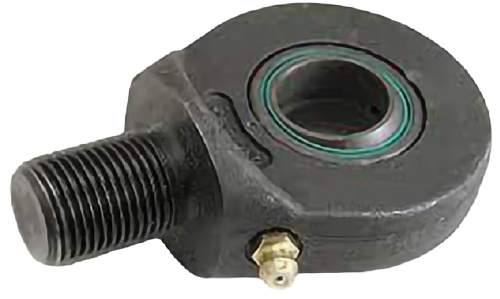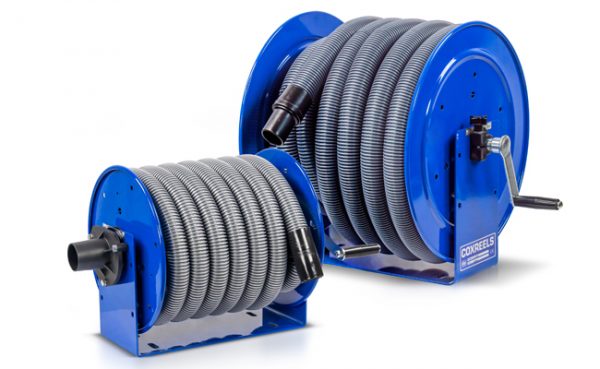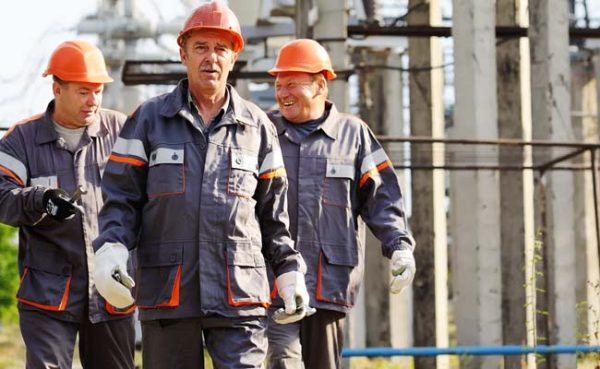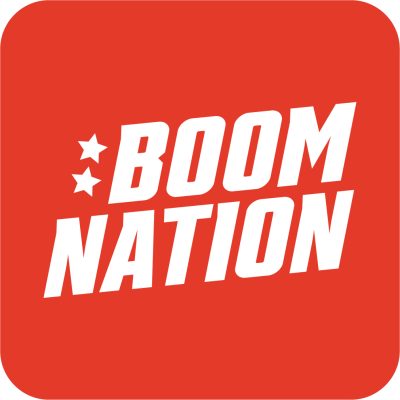Replacing & Aligning a Hydraulic Cylinder
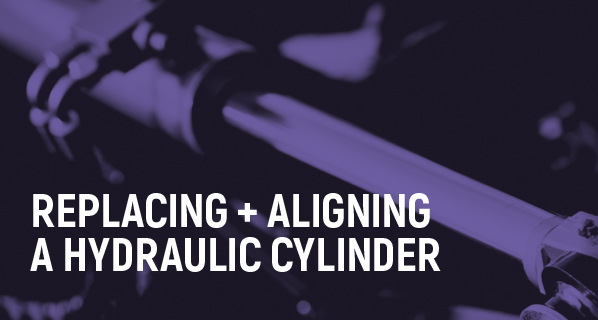
When installing a replacement cylinder, confirm that it matches the original part. Inspect the linkages and connection points for wear, such as cracked or oval-shaped brackets or worn clevis pins. Installing a new cylinder into damaged or worn connections may cause short-term failure by misalignment or side-loading. Ensure the cylinder is positioned correctly in the mounts. The cylinder barrel is mounted to the stationary member of the machine, and that the cylinder rod is mounted to the moving member of the machine. This is done so that the hoses will not be torn loose as the cylinder extends. Notice in Fig. 3.31 that if Cylinder A were installed backwards (with the ends reversed), the cylinder rod would move the cylinder farther away from the tractor and take the slack out of the hose, potentially stretching the hoses enough to cause failure.
Cylinder misalignment means that the load is not applied along the centerline of the cylinder as the rod extends and retracts. Misalignment is associated with rod cocking, a bent cylinder rod, galling on one side of the rod, and uneven wear at the opposite edges of the rod or cylinder bushing and rod pins.
Engineering problems and misapplication account for some cylinder misalignment problems, but most are caused by operator error and abuse.
If a slight misalignment cannot be avoided then the use of a spherical rod eye attachment (Fig. 3.32) may be required to compensate.
Side loads can be caused by bent or twisted structures, which result in the pivot points of the cylinder no longer being on a parallel plane. As the cylinder extends, the misaligned pivot points will induce enough of a side-load that the rod seal may begin to leak and also cause excessive wear on the rod-bearing surface.
Safety Tip: Please make sure to observe all safety precautions including use of personal protective equipment and suitable fluid containment.
All the mounting bolts should be torqued to the value specified in the service manual. All the pivot points should be greased upon completion of assembly and periodically as per the machine’s recommended maintenance schedule.
When a hydraulic cylinder is replaced, it must be bled to get the air out of the cylinder. Remember that air is compressible, and there is a potential safety hazard present if the cylinder is extended or retracted against a load. The safest method of removing the air is to cycle the unmounted cylinder, cap the ports, and then install it. This method will not work if the oil will drain out of either of the cylinder ports when connecting the lines after the cylinder is mounted. Other methods include using automatic air bleeds or temporarily connecting bleed hoses to pressure test points on the cylinder. Do not fully extend or retract cylinders until air is bled out of a system. If large or very long return lines are in the system, the air in these lines will, if allowed, aerate the fluid in the reservoir. Aerated fluid will cause the pump to aerate and the system to operate erratically. Careful analysis and preparation must be made before and during the air-bleeding process. It may be possible to connect the cap-end of the cylinder to the stationary mounting and cycle the cylinder under no load conditions, but there is the possibility that the rod-end will be rammed into another machine member as it extends unless it is supported and allowed to move freely. Before mounting one end of a hydraulic cylinder and then cycling it to bleed it, be sure that the rod eye will not be forced into another member of the machine when the rod extends.
Once the air has been suitably bled and the cylinder properly attached, cycle the function with no load to inspect for any indication of misalignment or side-load. If either condition is observed, take corrective action before operating under load or putting the machine back in service.
Test Your Skills
1. After bleeding the cylinder of any air and before placing the cylinder back into service, it is observed that while the cylinder is cycling under no load, it seems to be binding up as it extends. What should be done?
a. Increase the pressure with the cylinder extended and retracted to twist the frame back into position.
b. Increase the speed to give it the momentum to pass through the tight spot.
c. Increase the pressure to force it through the tight spot.
d. Stop and take action to determine and correct the cause.
e. Increase the load to get all the pivots back into position.
2. Using the figure shown, which one of the following could cause a hose to fail?
a. Cylinder mounting reversed.
b. Tractor hose connections reversed.
c. Cylinder hose connections reversed.
d. Directional control valve connections reversed.
e. Any one of the above would cause the hose to fail.
3. What is the reason behind bleeding a hydraulic cylinder when it is installed?
a. Safety.
b. Pump damage.
c. Hose rupture.
d. Fluid contamination.
e. Cylinder seal damage.
4. Which one of the following is the safest procedure to bleed air from a hydraulic cylinder?
a. Crack a pressurized fitting.
b. Cycle a mounted cylinder under load.
c. Cycle unmounted cylinder with hoses connected.
d. Operate the system in neutral until it warms up.
e. Cycle the cylinder by hand with the hoses connected.
See solutions
1-d
2-a
3-a
4-c


